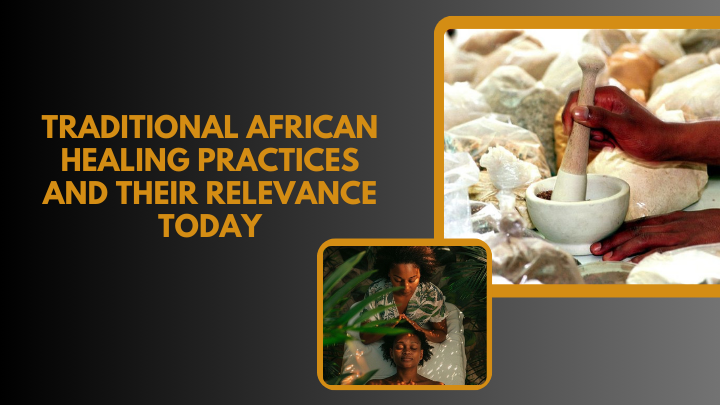Traditional healing Practices
For centuries, traditional African healing practices have played a vital role in maintaining health and well-being. Rooted in a holistic approach, these practices focus on treating the body, mind, and spirit as interconnected aspects of health. Today, as more people seek natural and holistic alternatives to modern medicine, African healing traditions are gaining renewed interest worldwide.
The Foundations of Traditional African Healing
African traditional medicine is deeply connected to spirituality, nature, and community. Healing is not just about curing physical ailments—it involves restoring balance, addressing emotional distress, and fostering a connection with ancestors and the environment. Traditional healers, known by various names such as sangomas, herbalists, or shamans, play a central role in diagnosing and treating ailments.
- Herbal Medicine: Nature’s Pharmacy
African traditional medicine relies heavily on the healing power of plants, roots, and herbs. Remedies are often prepared as teas, pastes, powders, or infusions to treat various conditions. Some commonly used herbs include:
- Neem – Known for its antibacterial and detoxifying properties.
- Baobab – Rich in vitamin C and antioxidants, used to boost immunity.
- Devil’s Claw – Traditionally used for pain relief and inflammation.
- Hibiscus – A popular detoxifying tea with heart health benefits.
- Spiritual Healing and Ancestral Connection
In many African cultures, illness is believed to be caused by spiritual imbalances or disharmony. Traditional healers use divination, prayer, and rituals to identify the root causes of illness. Ancestral reverence plays a crucial role, as it is believed that ancestors guide and protect the living.
- Energy and Sound Healing
Drumming, chanting, and dancing are often used in healing ceremonies to restore energy flow in the body. Rhythmic drumming has been shown to reduce stress, enhance mental clarity, and promote emotional healing.
- Communal Healing and Support Systems
Healing in African traditions is not an isolated process; it involves the support of family and the wider community. Group gatherings, storytelling, and shared meals foster emotional well-being and resilience.
Why These Practices Are Still Relevant Today
- Growing Interest in Holistic Health – Many people today are seeking natural remedies and holistic treatments that consider mental, physical, and emotional well-being.
- Sustainable and Natural Healing – With increasing concerns over pharmaceutical dependency, herbal medicine provides a sustainable and effective alternative.
- Mental Health and Spiritual Wellness – Traditional healing acknowledges emotional and spiritual aspects of health, which modern medicine often overlooks.
- Integration with Modern Medicine – Some African countries are integrating traditional medicine into healthcare systems, recognizing its value in treating chronic and lifestyle-related illnesses.
Traditional African healing practices offer profound wisdom in maintaining health and balance. Whether through herbal remedies, spiritual healing, or communal support, these traditions continue to inspire modern approaches to well-being. By combining the best of traditional and modern medicine, we can create a more holistic and inclusive approach to health.



